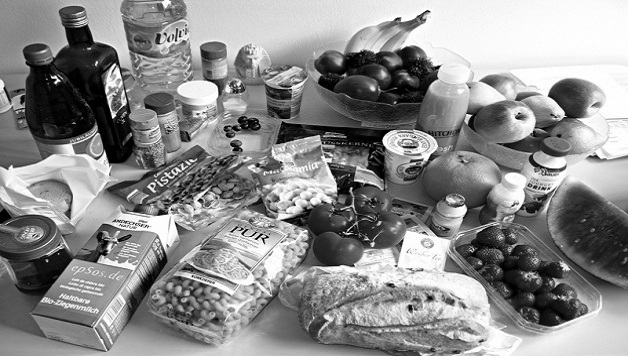Only a week after a new inquiry was announced into country of origin food labelling (blogged about here), the ACCC has published guidance, the Country of origin claims and Australian Consumer Law Guide (Guide), to assist businesses in making such claims. The release of the Guide comes more than a year after the Chairman of the ACCC, Rod Sims, announced in a speech to the Australian Food & Grocery Council in Canberra that the ACCC would “releas[e] consumer friendly advice to decode the various origin claims of Made in Australia, Product of Australia and Grown in Australia.”
The Guide is designed to help businesses understand the ACL provisions relating to country of origin claims and how these operate in practice. The ACCC undertook broad consultation in creating the Guide, teaming up with an inter-governmental National Working Group comprised of the Australian Customs and Border Protection Service, the Department of Agriculture, the Department of Health, the Department of Foreign Affairs and Trade and Food Standards Australia New Zealand, and chaired by the Department of Industry and Treasury. Various industry associations, as well as relevant state and territory regulators, were involved in the development of the Guide.
The Guide is a considerable 30 pages in length and very detailed, highlighting just how complex the regime can be and therefore the practical difficulties for many companies to navigate.
The relevant provisions of the ACL are detailed in the Guide, including those relating to misleading, deceptive or false representations about the country of origin of products or standard, quality, grade and manufacturing process, and the general principles that apply. It also provides some useful illustrations about how these provisions apply in practice from real case examples concerning food, apparel and furniture, amongst others, including “blatant” cases of misleading conduct.
The Guide sets out 10 general principles relating to country of origin claims under the ACL that businesses should bear in mind when considering and making such claims:
1 A business may make any origin claim provided that it is not false or misleading;
2 If a business chooses to make a country of origin claim, or is required by law to disclose the country of origin of a good, the ACL prohibits the business from making claims that are false or misleading;
3 The ACL provides ‘safe harbour’ defences for country of origin claims in relation to goods that meet certain criteria;
4 The ‘safe harbour’ defences are designed to provide businesses with certainty about the types of practices that will allow them to safely make country of origin claims without breaching the ACL;
5 If a claim cannot be substantiated, the ‘safe harbour’ defence cannot be met and it is challenged in legal proceedings, the claim will be assessed against the likelihood that it would be regarded as false or misleading or deceptive by ordinary and reasonable consumers;
6 The ACL safe harbour tests apply equally to any country of origin (but not region or place of origin) claims for all products;
7 Representations that a business can make may be more detailed or explicit than ‘made in’, ‘produce of’ or ‘grown in’ claims;
8 Pictorial representations may also be interpreted as country of origin claims (e.g. use of logos, pictures of iconic animals or iconic symbols);
9 Products that result from processing in different countries require particular care from businesses when making country of origin claims; and
10 A ‘Made in Australia from local and imported ingredients’ claim must not be misleading. The provision of extra information beyond ‘Made in Australia’ should clarify the origin of the components and not confuse consumers.
Of particular value to businesses will be the Guide’s relatively clear explanation of how the ‘safe harbour’ defence applies only to certain ‘produce of’, ‘grown in’ and ‘made in’ claims including a useful flow chart in efforts to try to simplify the complexity involved in the test and various formulas that have been heavily criticised as being artificial.
The interplay between the ACL and various food law regulations, including the Food Standards Code (Code) can be a minefield for those in the food sector. For example, the Code sets out minimum disclosure requirements for the supply of food, mandating that certain food products identify the country where the food was made, produced or grown, or the country where the food was manufactured or packaged and that the food is a mix of imported and/or local ingredients. The Guide aims to clarify the requirements between these different legal regimes which have been labelled by many as confusing.
While the Guide represents an educational approach to country of origin compliance, the ACCC is certainly continuing its enforcement activities in this area with its most recent win this year against Euro Solar and Australian Solar Panel, where the Federal Court imposed a combined penalty of $145,000, as well as declarations, injunctions, corrective advertising and costs for false and misleading claims about the origins of the solar panels (previously blogged about here). This follows a long line of cases by the ACCC concerning country of origin, including a court enforceable undertaking from Happiness Road Investment Group Pty Ltd for representations made about its ugg boots (previously blogged about here), and pecuniary penalties of $50,000 for both Kingisland Meatworks & Cellars Pty Ltd and Hooker Meats Pty Ltd for making false or misleading representations concerning its meat (previously blogged about here and here).
In launching the Guide, the Chairman of the ACCC, Rod Sims emphasised once again that “[c]redence claims are a priority area for the ACCC, particularly those with the potential to adversely impact the competitive process and small businesses.”
Photo credit: travelourplanet.com / Foter / Creative Commons Attribution 2.0 Generic (CC BY 2.0)








